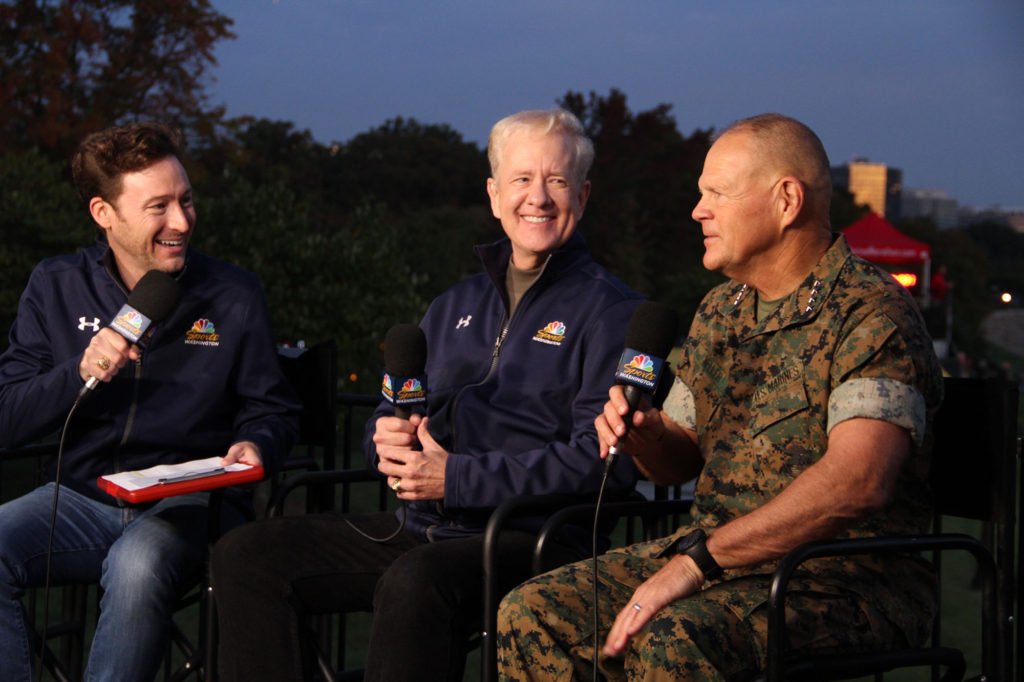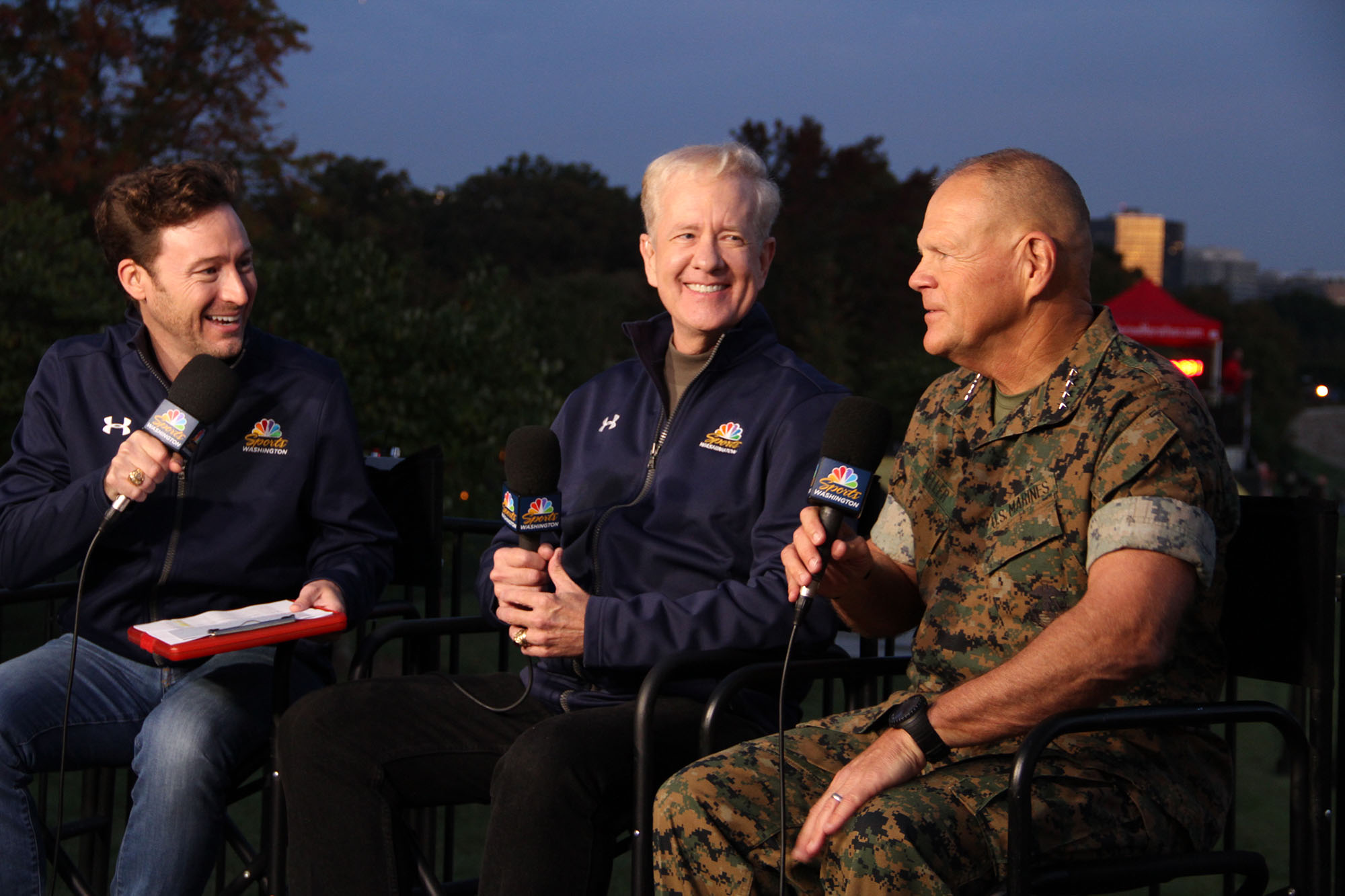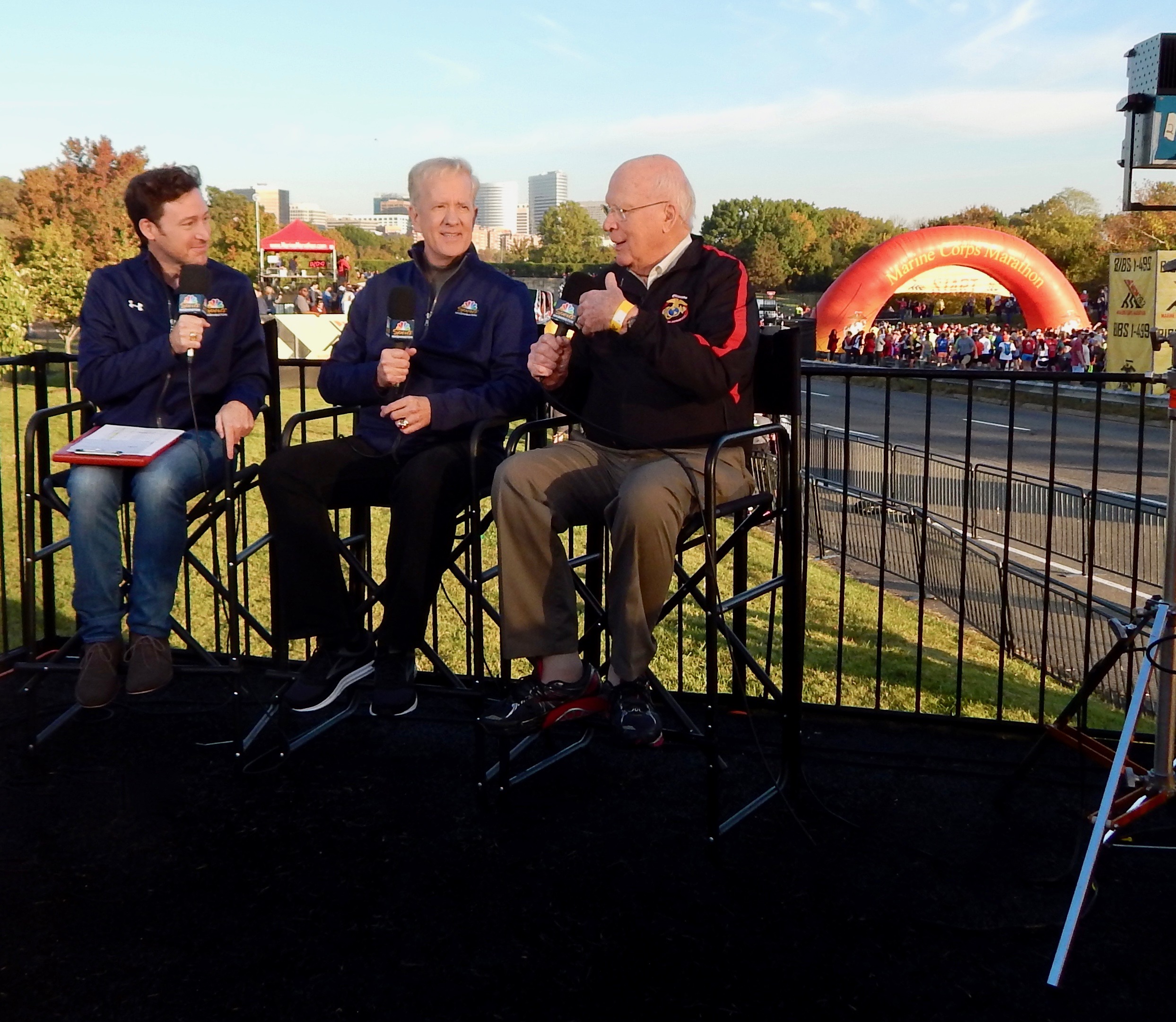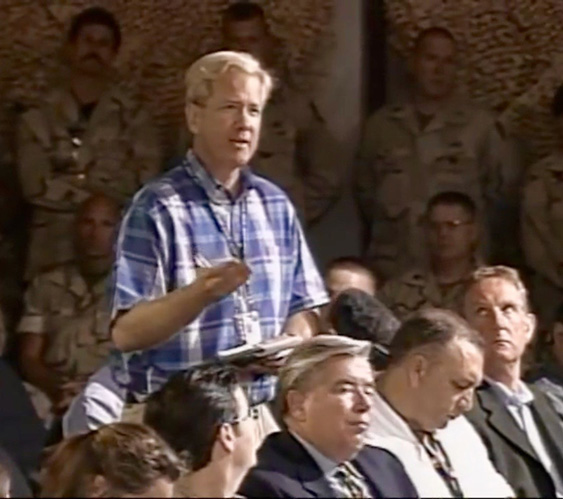
For decades now, one or two at a time, I have been collecting books about radio, my medium-of-first-love.
In 2018, I began to more intentionally keep an eye out for volumes about imaginative audio production, theater of the mind, and the history and impact of sound-based news and entertainment. Below: what I’ve gathered so far.

Abel, Jessica. Out on the Wire: The Storytelling Secrets of the New Masters of Radio. New York: B/D/N/Y, Broadway Books, 2015.
Adams, Noah. All Things Considered: A Radio Journal. New York: W. W. Norton & Company, 1992.
Bannerman, R. Leroy. Norman Corwin and Radio: The Golden Years. Tuscaloosa: University of Alabama Press, 1986.
Bannerman, R. Leroy. On a Note of Triumph: Norman Corwin and The Golden Years of Radio. Tuscaloosa: University of Alabama Press, 1986.
Barber, Red. The Broadcasters. New York: The Dial Press, 1970.
Barnouw, Erik. A Tower in Babel: A History of Broadcasting in the United States, Volume I – to 1933. New York: Oxford University Press, 1966.
Barnouw, Erik. The Golden Web: A History of Broadcasting in the United States, Volume II – 1933-1953. New York: Oxford University Press, 1968.
Barnouw, Erik. The Image Empire: A History of Broadcasting in the United States, Volume III – from 1953. New York: Oxford University Press, 1970.
Barson, Michael (Editor). Flywheel, Shyster, and Flywheel: The Marx Brothers’ Lost Radio Show. New York: Pantheon, 1988.
Bell, Bruce. Tune in Tomorrow: An Adventure in Retro-Radio. Lulu Publishing, 2017.
Bernstein, Mark and Alex Lubertozzi. World War II On The Air: Edward R. Murrow and the War That Defined a Generation. Naperville, Illinois: SourceBooks, 2003.
Biewen, John, and Alexa Dilworth (Editors). Reality Radio: Telling True Stories in Sound. Chapel Hill: University of North Carolina Press, 2017.
Bilby, Kenneth. The General: David Sarnoff and the Rise of the Communications Industry. New York: Harper & Row, 1986.
Billips, Connie, and Arthur Pierce. Lux Presents Hollywood: A Show-by-Show History of the Lux Radio Theatre and the Lux Video Theatre, 1934-1957. Jefferson, North Carolina: McFarland & Company, Inc., 1995.
Birkby, Robert. KMA Radio: The First Sixty Years. Shenandoah, Iowa: May Broadcasting Company, 1985.
Blade, Richard. World In My Eyes. Pensacola, Florida: Indigo River Publishing, 2017.
Bones, Bobby. Bare Bones: I’m Not Lonely if You’re Reading This Book. New York: Dey Street, 2016.
Bogasian, Eric. Talk Radio. New York: Vintage Books, 1987.
Briggs, Asa. The Birth of Broadcasting, Volume I: The History of Broadcasting in the United Kingdom. Oxford: Oxford University Press, 1961.
Brokenshire, Norman. This is Norman Brokenshire: An Unvarnished Self-Portrait. New York: David McKay and Company, 1954.
Bunis, Marty and Sue. A Collector’s Guide to Transister Radios: Identification and Values. Paducah, Kentucky: Collector Books, 1994.
Bunzel, Reed. Clear Vision: The Story of Clear Channel Communications. Albany, Texas: Bright Sky Press, 2008.
Buxton, Frank, and Bill Owen. The Big Broadcast: 1920-1950. New York: Avon, 1973.
Cantor, Louis. Wheelin’ on Beale: How WDIA-Memphis Became the Nation’s First All-Black Radio Station and Created the Sound that Changed America. New York: Pharos Books, 1992.
Charlamagne Tha God. Black Privilege: Opportunity Comes To Those Who Create It. New York: Touchstone, 2013.
Charnley, Mitchell V. News By Radio. New York: The MacMillan Company, 1948.
Chester, Giraud, and Garnet R. Garrison and Edgar E. Willis. Television and Radio (Third Edition). New York: Meredith Publishing Company, 1963.
Cloud, Stanley, and Lynne Olson. The Murrow Boys: Pioneers on the Front Lines of Broadcast Journalism. Boston: Houghton Mifflin Company, 1996.
Coleman, Wim and Pat Perrin. The Age of Broadcasting: Radio. Carlisle, Massachusetts: Discovery Enterprises, 1997.
Collins, Mary. National Public Radio: The Cast of Characters. Washington, D. C.: Seven Locks Press, 1993.
Collins, Philip. Radios: The Golden Age. New York: Black Dog & Leventhal Publishers, 1987.
Crider, David. Performing Personality: On-Air Radio Identities in a Changing Media Landscape. Lanham, Maryland: Lexington Books, 2016.
Crews, Albert. Radio Production Directing. Boston: Houghton Mifflin Company, 1944.
Culbert, David Holdbrook. News for Everyman: Radio and Foreign Affairs in Thirties America. Westport, Connecticut: Greenwood Press, 1976.
Cullen, Jr., Benjamin T., Editor. Old Time Radio Days: An Album of Memories. Richmond, Virginia: WBTC Productions, 2003.
Dary, David. Radio News Handbook (Second Edition). Blue Ridge Summit, Pennsylvania: Tab Books, 1970.
Doolittle, John. Don McNeill and His Breakfast Club. Notre Dame, Indiana: University of Notre Dame Press, 2001.
Douglas, Susan J. Listening In: Radio and the American Imagination. New York: Times Books, 1999.
Dunning, John. On The Air: The Encyclopedia of Old Time Radio. New York: Oxford University Press, 1998.
Dunning, John. Two O’Clock Eastern War Time. New York: Scribner, 2001.
Dupuis, Alexander. Tower-102. San Jose: Writers Club Press, 2000.
Eberly, Philip K. Susquehanna Radio: The First Fifty Years. York, Pennsylvania: Susquehanna Radio Corp., 1992.
Edwards, Bob. A Voice in the Box: My Life in Radio. Lexington: University of Kentucky Press, 2011.
Edwards, Bob. Edward R. Murrow and the Birth of Broadcast Journalism. Hoboken, New Jersey: John Wiley & Sons, Inc., 2004.
Edwards, Bob. Fridays with Red: A Radio Friendship. New York: Simon & Schuster, 1993.
Ehrlich, Matthew C. Radio Utopia: Postwar Audio Documentary in the Public Interest. Ubana: University of Illinois Press, 2011.
Elkin, Stanley. The Dick Gibson Show: A Novel. Normal, Illinois: Dalkey Archive Press, 1970.
Elliott, Bob, and Ray Goulding. From Approximately Coast to Coast…it’s The Bob and Ray Show. New York: Atheneum, 1983.
Elliott, Bob, and Ray Goulding. Write If You Get Work: The Best of Bob & Ray. New York: Random House, 1975.
Erickson, Hal. Religious Radio and Television in the United States, 1921-1991: The Programs and Personalities. Jefferson, North Carolina: McFarland & Company, 1992.
Ewbank, Henry L., and Sherman P. Lawton. Broadcasting: Radio and Television. New York: Harper & Brothers, 1952.
Field, Charles Kellogg. Cheerio’s Book of Days. New York: Garden City Publishing Company, 1940.
Finlay, Mary Lou. The As it Happens Files: Radio that May Contain Nuts. Canada: Alfred A. Knopf, 2008.
Fisher, Marc. Something in the Air: Radio, Rock, and the Revolution That Shaped a Generation. New York: Random House, 2007.
Fitzhugh, Bill. Highway 61 Resurfaced. New York: William Morrow, 2005.
Fitzhugh, Bill. Radio Activity. New York: William Morrow, 2004.
Flaherty, John J. Behind the Microphone. New York: J. B. Lippincott Company, 1944.
Flanagan, John Mack. Tight & Bright: A Diskjockey – Vietnam Memoir. Bloomington, Indiana: Xlibris, 2015.
Fleece, Larry. Perry on the Left, Price on the Right: Thirty Years with the Odd Couple of Island Radio. Honolulu: Watermark Publishing, 2014.
Fong-Torres, Ben. The Hits Just Keep on Coming. San Francisco: Miller-Freeman Books, 1998.
Fornatale, Peter, and Joshua E. Mills. Radio in the Television Age. New York: The Overlook Press, 1980.
Fowler, Gene, and Bill Crawford. Border Radio: Quacks, Yodelers, Pitchmen, Psychics, and Other Amazing Broadcasters of the American Airwaves. Austin: Texas Monthly Press, 1987.
Frederick, Howard H. Cuban-American Radio Wars: Ideology in International Telecommunications. Norwood, New Jersey: Ablex Publishing Corportation, 1986.
Gabler, Neal. Winchell: Gossip, Power and the Culture of Celebrity. New York: Alfred A. Knopf, 1995.
Garner, Joe. We Interrupt This Broadcast (Updated Second Edition). Naperville, Illinois: Sourcebooks, Inc., 2000.
Gifford, F. Tape: A Radio News Handbook (Third Edition). Englewood, Colorado: Morton Publishing Company, 1987.
Gordon, George N., and Irving A. Falk. On The Spot Reporting: Radio Records History. New York: Julian Messner, 1967.
Gorman, John, with Tom Feran. The Buzzard: Inside the Glory Days of WMMS and Cleveland Rock Radio, A Memoir. Cleveland: Gray and Company, 2007.
Gray, Barry. My Night People. New York: Simon and Schuster, 1975.
Greb, Gordon, and Mike Adams. Charles Herrold, Inventor of Radio Broadcasting. Jefferson, North Carolina: McFarland & Company, 2003.
Hall, Claude, and Barbara Hall. This Business of Radio Broadcasting. New York: Billboard, 1977.
Hamilton, Bob. D. Radio ’73: Operating Manual for Starship. Los Angeles: Hamilton & Friends, 1973.
Harper, Laurie. Don Sherwood: The Life and Times of the “World’s Greatest Disc Jockey”. Rocklin, California: Prima Publishing, 1989.
Hart, Dennis. Monitor (Take 2): The Revised, Expanded Inside Story of Network Radio’s Greatest Program. New York: iUniverse, Inc., 2003.
Hausman, Carl, and Philip Benoit and Lewis B. O’Donnell. Radio Production: Production, Programming and Performance (Fifth Edition). Belmont, California: Wadsworth/Thomson Learning, 2000.
Havers, Richard. Here is the News: The BBC and the Second World War. Gloucestershire: Sutton Publishing, 2007.
Heil, Alan L. Voice of America: A History. New York: Columbia University Press, 2003.
Henderson, Amy. On The Air: Pioneers of American Broadcasting. Washington City: Smithsonian Institution Press for the National Portrait Gallery, 1988.
Herr, Michael. Walter Winchell: A Novel. New York: Alfred A. Knopf, 1990.
Hilmes, Michele, and Jason Loviglio (Editors). Radio Reader: Essays in the Cultural History of Radio. New York: Routledge, 2002.
Hilmes, Michele. Radio Voices: American Broadcasting, 1922-1952. Minneapolis: University of Minnesota Press, 1997.
Hobler, Herbert W. And Now the News, 1945: A Momentous Year Comes Alive Through Daily Brief Radio Newscasts. Princeton, New Jersey: Passport Communications, 1994.
Hoffer, Jay. Radio Production Techniques. Blue Ridge Summit, Pennsylvania: Tab Books, 1974.
Isay, Dave (Editor). Listening is an Act of Love: A Celebration of American Life from the StoryCorps Project. New York: The Penguin Press, 2007.
Joyner, Tom, with Mary Flowers Boyce. I’m Just a DJ But…It Makes Sense to Me. New York: Warner Books, 2005.
Kassis, Annette. Sacramento on the Air: How the McClatchy Family Revolutionized West Coast Broadcasting. Charleston: The History Press, 2015.
Keiller, Garrison. WLT: A Radio Romance. New York: Viking Penguin, 1991.
Keith, Michael C., and Mary Ann Watson (Editors). Norman Corwin’s One World Flight: The Lost Journal of Radio’s Greatest Writer. New York: Continuum, 2009.
Keith, Michael C. (Editor). Radio Cultures: The Sound Medium in American Life. New York: Peter Lang, 2008.
Kern, Jonathan. Sound Reporting: The NPR Guide to Audio Journalism and Production. Chicago: University of Chicago Press, 2008.
Klavan, Gene. Turn That Damned Thing Off: An Irreverent Look at TV’s Impact on the American Scene. Indianapolis: The Bobbs-Merrill Company, Inc., 1972.
Krasny, Michael. Off Mike: A Memoir of Talk Radio and Literary Life. Stanford, California: Stanford University Press, 2008.
Krieg, Joyce. Murder Off Mike: A Talk Radio Mystery. New York: Thomas Dunne Books, St, Martin’s Minotaur, 2003.
Krieg, Joyce. Riding Gain: A Talk Radio Mystery. New York: Thomas Dunne Books, St, Martin’s Minotaur, 2005.
Krieg, Joyce. Slip Cue: A Talk Radio Mystery. New York: St, Martin’s Minotaur, 2004.
Ladd, Jim. Radio Waves: Life and Revolution on the FM Dial. New York: St. Martin’s Press, 1991.
Lister, Hal. Krautland Calling: An American POW Radio Broadcaster in Nazi Germany. Austin, Texas: Eakin Press, 1989.
Lodge, Tom. The Ship That Rocked: How Radio Caroline Defied the Establishment, Launched the British Invasion and Made the Planet Safe for Rock and Roll. Washington: Bartleby Press, 2010.
Looker, Thomas. The Sound and the Story: NPR and the Art of Radio. Boston: Houghton Mifflin Company, 1995.
Loviglio, Jason. Radio’s Intimate Public: Network Broadcasting and Mass-Mediated Democracy. Minneapolis, University of Minnesota Press, 2005.
Lucas, Fred V. The Right Frequency: The Story of the Talk Radio Giants Who Shook Up the Political Establishment. Palisades, New York: History Publishing Company, 2012.
Lujack, Larry, and Daniel A. Jadlicka. Super Jock. Chicago: Henry Regnery Company, 1975.
MacDonald, J. Fred. Don’t Touch That Dial!: Radio Programming in American Life from 1920 to 1960. Chicago: Nelson-Hall, 1991.
Mansfield, Stephen, and David A. Holland. Paul Harvey’s America: The Life, Art, and Faith of a Man who Transformed Radio and Inspired a Nation. Carol Stream, Illinois: Tyndall House Publishers, 2009.
McGill, Donald J. Tune In To Danger: A Talk Radio Mystery. San Francisco: The Dangerous Press, 2014.
Milam, Lorenzo Wilson. The Radio Papers: From KRAB to KCHU, Essays on the Art and Practice of Radio Transmission. San Diego, California: MHO Works, 1986.
Mitchell, Curtis. Cavalcade of Broadcasting. Chicago: Follett Publishing Company, 1970.
Morgan, Henry. Here’s Morgan: The Original Bad Boy in Broadcasting. New York: Barricade Books, Inc., 1994.
Morrow, Cousin Brucie, and Laura Baudo. Cousin Brucie: My Life in Rock ’n’ Roll Radio. New York: Beech Tree Books / William Morrow, 1987.
Murrow, Edward R. This is London: Witness to War. New York: Schocken Books, 1941.
Nachman, Gerald. Raised on Radio. New York: Pantheon, 1998.
Napoli, Lisa. Radio Shangri-La: What I Learned in Bhutan, the Happiest Kingdom on Earth. New York: Crown Press, 2010.
Napoli, Lisa. Susan, Linda, Nina & Cokie: The Extraordinary Story of the Founding Mothers of NPR. New York: Abrams Press, 2021.
Neer, Richard. FM: The Rise and Fall of Rock Radio. New York: Villard, 2001.
Nightingale Gordon. WNEW: Where the Melody Lingers On. New York: Nightingale Gordon, 1984.
Paley, William S. As It Happened: A Memoir. Garden City, New York: Doubleday & Company, 1979.
Passman, Arnold. The Deejays. New York: The Macmillan Company, 1971.
Peck, William A. Radio Promotion Handbook. Blue Ridge Summit, Pennsylvania: Tab Books, 1968.
Phillips, Lisa A. Public Radio Behind the Voices: Profiles of Public Radio’s Most Treasured Personalities. New York: CDS Books, 2006.
Porter, Jeff. Lost Sound: The Forgotten Art of Radio Storytelling. Chapel Hill: University of North Carolina Press, 2016.
Reed, Jim. Everything Imus: All You Ever Wanted to Know About Don Imus. Secaucus, New Jersey: Birch Lane Press, 1999.
Reel, A. Frank. The Networks: How They Stole The Show. New York: Charles Scriber’s Sons, 1979.
Rehm, Diane. On My Own. New York: Alfred A. Knopf, 2016.
Reinhart, Charles and Erna. Jimmy Stewart On the Air. Duncan, Oklahoma: BearManor Media, 2012.
Rubery, Matthew. The Untold Story of the Talking Book. Cambridge, Massachusetts: Harvard University Press, 2016.
Rudel, Anthony. Hello, Everybody!: The Dawn of American Radio. Orlando: Harcourt, Inc., 2008.
Schlitt, Monsignor Harry G. I’ll Never Tell: Odyssey of a Rock & Roll Priest. San Mateo, California: Sand Hill Review Press, 2016.
Schneider, John F., in association with the California Historical Radio Society and its Bay Area Radio Museum. Images of America: Bay Area Radio. Charleston: Arcadia Publishing, 2012.
Schwartz, A. Brad. Broadcast Hysteria: Orson Welles’s War of the Worlds and the Art of Fake News. New York: Hill and Wang, 2015.
Settel, Irving. A Pictorial History of Radio. New York: Grosset & Dunlap, 1967.
Shiels, Michael. J. P. McCarthy: Just Don’t Tell ‘Em Where I Am. Chelsea, Michigan: Sleeping Bear Press, 1997.
Sklar, Rick. Rocking America: How the All-Hit Radio Stations Took Over. New York: St. Martin’s Press, 1984.
Slate, Sam J. and Joe Cook. It Sounds Impossible: The Hilarious Story of Radio Broadcasting from the Beginning to the Future. New York: The MacMillan Company, 1963.
Slide, Anthony. Great Radio Personalities in Historic Photographs. New York: The Vestal Press, 1982.
Smith, Sally Bedell. In All His Glory: The Life of William S. Paley, the Legendary Tycoon and His Brilliant Circle. New York: Simon & Schuster, 1990.
Smulyan, Susan. Selling Radio: The Commercialization of American Broadcasting 1920-1934. Washington: Smithsonian Institution Press, 1994.
Soley, Lawrence C. Radio Warfare: OSS and CIA Subversive Propaganda. New York: Praeger, 1985.
Squier, Susan Merrill (Editor). Communities of the Air: Radio Century, Radio Culture. Durham: Duke University Press, 2003.
Stamberg, Susan. Every Night at Five: Susan Stamberg’s All Things Considered Book. New York: Pantheon, 1982.
Stein, Jeff. Making Waves: The People and Places of Iowa Broadcasting. Cedar Rapids: WDG Publishing, 2004.
Sterling, Christopher H., and Michael C. Keith. Sounds of Change: A History of FM Broadcasting in America. Chapel Hill: University of North Carolina Press, 2008.
Sweeney, Michael S. Secrets of Victory: The Office of Censorship and the American Press and Radio in World War II. Chapel Hill: University of North Carolina Press, 2001.
The Man at the Microphone. Washington Broadcast. Garden City, New York: Doubleday, Doran and Company, 1944.
Thomas, Bob. Winchell. Garden City, New York: Doubleday & Company,1971.
Thomas, Bob. Walter Winchell: The Man and the Myth. Garden City, New York: Doubleday & Company,1971.
Thomas, Lowell. Good Evening Everybody: From Cripple Creek to Samarkand. New York: William Morrow and Company, 1976.
Vowell, Sarah. Radio On. New York: St. Martin’s Griffin, 1996.
Walker, Jesse. Rebels on the Air: An Alternative History of Radio in America. New York: New York University Press, 2001.
Warren, Donald. Radio Priest: Charles Coughlin, The Father of Hate Radio. New York: The Free Press, 1996.
Weaver, Pat, with Thomas M. Coffey. The Best Seat in the House: The Golden Years of Radio and Television. New York: Alfred A. Knopf, 1994.
Weiner, Ed. Let’s Go To Press: A Profile of Walter Winchell. New York: G. P. Putnam’s Sons, 1955.
Whittinghill, Dick. Did You Whittinghill This Morning? Chicago: Henry Regnery Company, 1976.
Wolfman Jack, with Byron Laursen. Have Mercy: Confessions of the Original Rock ‘n’ Roll Animal. New York: Warner Books, 1995.
Woodfin, Jane. Of Mikes and Men. New York; McGraw-Hill, 1951.
Woolley, Scott. The Network: The Battle For The Airwaves and the Birth of the Communications Age. New York: HarperCollins, 2016.
Wurtzler, Steve J. Electric Sounds: Technology Change and the Rise of Corporate Mass Media. New York: Columbia University Press, 2007.






